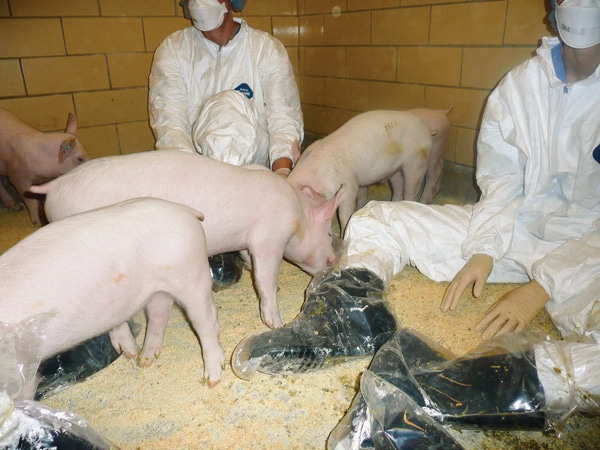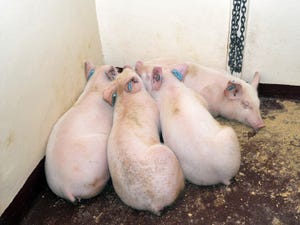Fomites Shown to Spread Influenza
A trio of researchers evaluated the role of fomites (coveralls, boots, gloves) as indirect means of influenza transmission between pig populations.
December 15, 2012

Influenza viruses are known to cause respiratory disease in pigs, and these viruses can be directly transmitted between people, pigs and other species, according to University of Minnesota researchers.
But research has not assessed in detail whether indirect pig transmission of influenza viruses occurs and is important.
A trio of researchers evaluated the role of fomites (coveralls, boots, gloves) as indirect means of influenza transmission between pig populations. The pig groups were separated by two different biosecurity settings (low and high).
Pig groups were separated into flu-negative (sentinel) and flu-positive groups. Then personnel moved from flu-infected to sentinel pig groups in order to determine if flu virus transmits via fomites.
All pig groups were housed in separate isolation rooms to prevent flu transmission via other routes. Personnel wore N-95 respirators to prevent interspecies transmission.
During the trial, two sentinel groups of pigs were visited immediately after personnel interacted with infected pigs (low-biosecurity group). Two sentinel groups of pigs were visited after personnel interacted with infected pigs and then changed outer clothing, boots and equipment and washed their hands and face (high-biosecurity group).
There were nine movement events from flu-infected pigs to sentinel pigs that took place over a five-day period. Samples for influenza virus detection were collected from pigs and fomites.
Of the 144 fomite samples collected following contact with infected pigs, 11 (8%) were confirmed as low-level positives. All positive samples were from boots and coveralls.
Of the total number infected, flu virus transmission via fomites was confirmed in two of four sentinel groups (one low-biosecurity group and one high-biosecurity group) as shown in Figure 1.

The researchers note this study illustrates that fomites, such as boots and coveralls, can transmit influenza virus from infected to susceptible populations.
While the frequency of this event cannot be determined, this indirect means of transmission should be taken into account as part of a comprehensive biosecurity strategy.
Researchers: Matt Allerson, DVM; Carol Cardona, DVM; and Montse Torremorell, DVM, University of Minnesota. For more information, contact Torremorell by phone (612) 625-1233, fax (612) 625-1210 or e-mail [email protected].
You May Also Like



